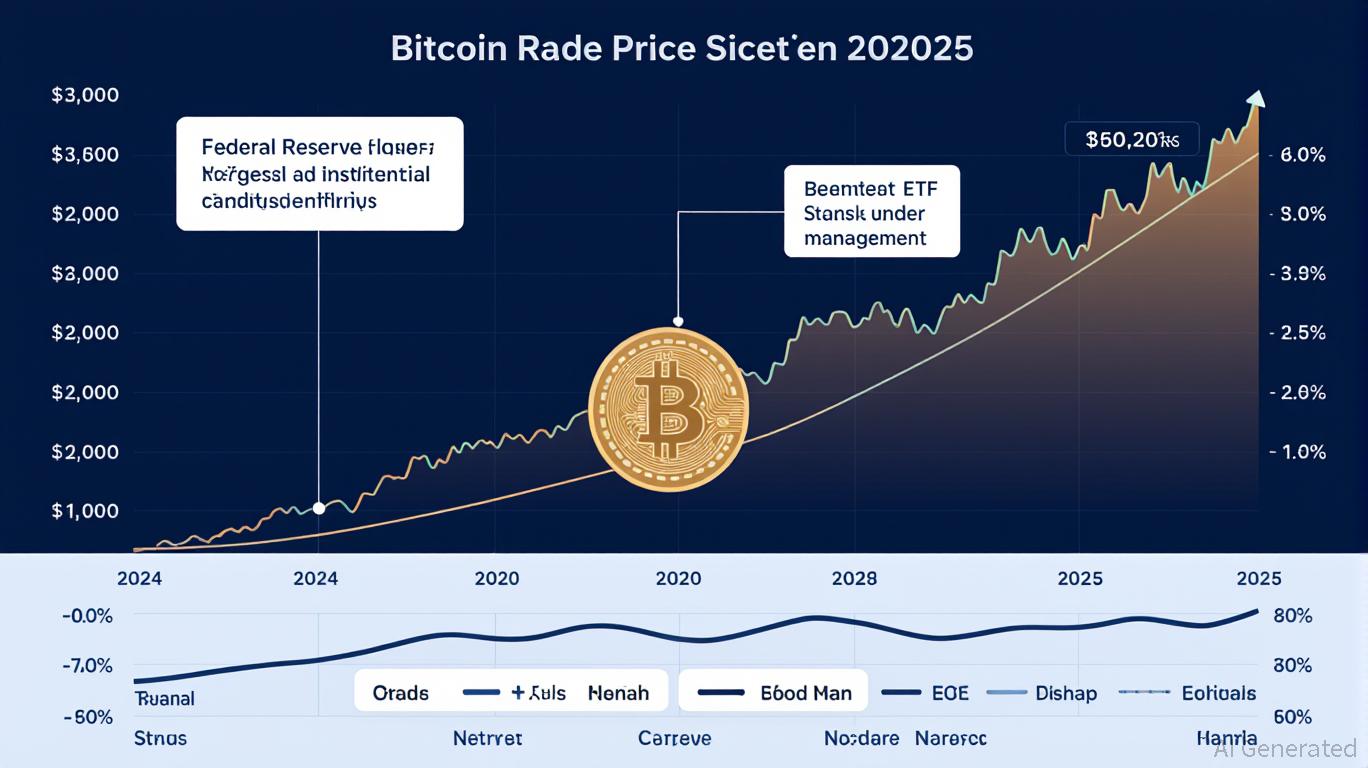
The landscape of American retirement planning is undergoing a seismic shift. On August 7,2025, President Donald Trump signed an executive order that could fundamentally reshape 401(k) investment menus by allowing access to alternative assets, including cryptocurrency. This move is already sending ripples through the financial industry and sparking debates among investors, plan sponsors, and regulators alike.
What the Executive Order Means for Crypto in 401(k)s
The executive order directs the Secretary of Labor to review and potentially revise fiduciary guidelines so that digital assets like Bitcoin and Ethereum can be included as eligible investments in retirement plans. The policy aims to democratize access to alternative assets for all Americans preparing for retirement, not just institutional or high-net-worth investors.
This directive is already prompting major players such as Goldman Sachs and T. Rowe Price to announce new alternative investment products for retirement accounts, with launches expected by year-end. These offerings will range from target-date funds with a modest allocation to alternatives, to specialized portfolios for wealthier clients seeking higher risk-adjusted returns.
Bitcoin at $115,745: A New Era of Diversification?
With Bitcoin currently priced at $115,745, the prospect of adding digital assets to 401(k)s is no longer theoretical. Proponents argue that crypto’s historically uncorrelated returns could help buffer traditional portfolios against market downturns while offering outsized growth potential. The current market data underscores this narrative: even after a minor daily dip of $1,106 (-0.95%), Bitcoin remains firmly above the six-figure threshold. Ethereum also trades robustly at $4,479.01, down just -1.28% on the day.
However, this new asset class brings its own set of challenges – volatility being chief among them. Retirement savers must weigh these risks against the potential rewards of early adoption within tax-advantaged accounts.
Regulatory Nuances: What’s Changing for Plan Sponsors?
The executive order’s language is clear but leaves implementation details open-ended. The Department of Labor has six months to issue guidance on how plan sponsors can safely include crypto and other alternatives without running afoul of fiduciary duties or ERISA compliance requirements (source). Notably, the order limits direct digital currency holdings but does not apply a similar restriction to private equity or real estate allocations.
This regulatory ambiguity is likely to fuel both innovation and caution in the coming months as providers race to develop compliant products while managing litigation risk and participant education needs.
Bitcoin (BTC) Price Prediction 2026-2031 Post-Executive Order
Forecast reflects potential impacts of 401(k) access, regulatory shifts, and institutional adoption
| Year | Minimum Price | Average Price | Maximum Price | % Change (Avg) YoY | Market Scenario Insights |
|---|---|---|---|---|---|
| 2026 | $94,000 | $128,000 | $158,000 | +10.6% | Initial 401(k) access drives moderate demand; volatility persists amid regulatory clarifications. |
| 2027 | $110,000 | $144,000 | $188,000 | +12.5% | Broader adoption in retirement plans; new institutional products boost inflows. |
| 2028 | $125,000 | $160,000 | $210,000 | +11.1% | Market matures, but macroeconomic headwinds and halving event drive price discovery. |
| 2029 | $140,000 | $178,000 | $235,000 | +11.3% | Global pension funds begin allocation; competition from altcoins rises. |
| 2030 | $157,000 | $198,000 | $265,000 | +11.2% | Wider mainstream acceptance; improved custody and compliance infrastructure. |
| 2031 | $175,000 | $220,000 | $295,000 | +11.1% | Crypto as a standard retirement asset; regulatory clarity enhances stability, but cyclical corrections possible. |
Price Prediction Summary
Bitcoin’s inclusion in 401(k) plans, catalyzed by the 2025 executive order, is expected to drive steady growth and institutional adoption through 2031. While average annual price increases are projected around 10–12%, significant volatility and wide min/max ranges reflect ongoing regulatory, technological, and macroeconomic uncertainties. Bitcoin’s role as a retirement asset could support higher valuations, but caution is warranted due to inherent market risks.
Key Factors Affecting Bitcoin Price
- Impact of 401(k) and retirement plan adoption: Steady inflows from long-term investors could reduce volatility over time.
- Regulatory environment: Ongoing U.S. and global regulatory developments will influence both demand and price stability.
- Institutional product innovation: New fund offerings and improved custody solutions could attract further institutional capital.
- Market cycles and Bitcoin halving events: Cyclical supply reductions and macro factors will continue to drive price swings.
- Competition from alternative assets: Other cryptocurrencies and alternative investments may compete for allocation in diversified portfolios.
Disclaimer: Cryptocurrency price predictions are speculative and based on current market analysis.
Actual prices may vary significantly due to market volatility, regulatory changes, and other factors.
Always do your own research before making investment decisions.
Why Crypto in Retirement Plans Matters Now
The U. S. retirement market is vast – with trillions of dollars managed through employer-sponsored plans. For decades these funds have been limited largely to stocks and bonds; now that may change dramatically thanks to Trump’s executive order on crypto 401(k) options (see details here). For forward-thinking investors seeking diversification beyond traditional markets, this policy shift opens up new frontiers – but also raises questions about risk management strategies in an era where digital assets are no longer fringe investments.
For plan participants, the opportunity to allocate a portion of their retirement savings to assets like Bitcoin and Ethereum introduces both promise and complexity. While digital assets have demonstrated the potential for high returns, their notorious price swings require a more nuanced approach to portfolio construction and long-term planning. The key will be balancing exposure in a way that aligns with individual risk tolerance, investment horizon, and overall financial goals.

Practical Considerations: What Investors Should Watch For
As this regulatory transformation unfolds, investors should keep several practical factors in mind:
Key Considerations for Adding Crypto to Your 401(k)
-

Volatility and Risk: Cryptocurrencies are known for significant price swings. For example, Bitcoin (BTC) is currently trading at $115,745, down $1,106 (-0.95%) in the last 24 hours. Consider how such volatility might affect your long-term retirement goals and risk tolerance.
-

Custody and Security Solutions: Secure storage of digital assets is essential. Leading 401(k) providers partner with established custodians like Coinbase Custody and Fidelity Digital Assets to safeguard crypto holdings. Ensure your plan uses reputable, insured custodians.
-

Education and Resources: Navigating crypto investments requires up-to-date knowledge. Look for plans that offer access to educational resources from trusted sources like Fidelity Learning Center or Charles Schwab to help you make informed decisions.
Fees for alternative asset products may be higher than those for traditional mutual funds or ETFs. Custody arrangements, how digital assets are stored and secured, will also play a critical role in ensuring participant protection. Additionally, not all employers are expected to adopt these new investment options immediately; availability will likely vary by provider and plan sponsor risk appetite.
Market Impact: How Financial Institutions Are Responding
The response from major financial institutions has been swift. As noted earlier, Goldman Sachs and T. Rowe Price are preparing to roll out alternative asset offerings tailored for retirement accounts by year-end. Expect further announcements from other asset managers as competition heats up to capture early adopters in this emerging market segment.
Yet even as providers innovate, they must do so within a rapidly evolving regulatory landscape. The Department of Labor’s forthcoming guidance will shape how these products are structured, and could determine whether crypto becomes a mainstream 401(k) option or remains a niche allocation for sophisticated investors.
Risk Management: Navigating Volatility in Crypto 401(k)s
The volatility of digital assets like Bitcoin (currently at $115,745) and Ethereum ($4,479.01) cannot be overstated. While these assets have outperformed many traditional investments over the past decade, sharp corrections are not uncommon, making prudent risk management essential within retirement portfolios.
Savvy investors should consider dollar-cost averaging strategies or limiting crypto exposure to a small percentage of their total portfolio (often cited as 1%–5%) until there is greater regulatory clarity and historical data on long-term performance within retirement accounts.
Looking Ahead: The Future of Crypto in US Retirement Plans
The Trump executive order has set the stage for profound change in how Americans can build wealth for retirement. If implemented thoughtfully, with robust safeguards around education, transparency, and risk mitigation, crypto inclusion could empower millions with new tools for diversification and potential growth.
However, success hinges on collaboration between regulators, plan sponsors, asset managers, and participants themselves. As the Department of Labor crafts new guidelines over the coming months, and as market leaders pilot innovative products, the eyes of the investing world will remain fixed on how these unprecedented changes unfold.
For now, one thing is clear: the conversation around crypto in retirement plans is just beginning, and every stakeholder has a role to play in shaping its outcome.







